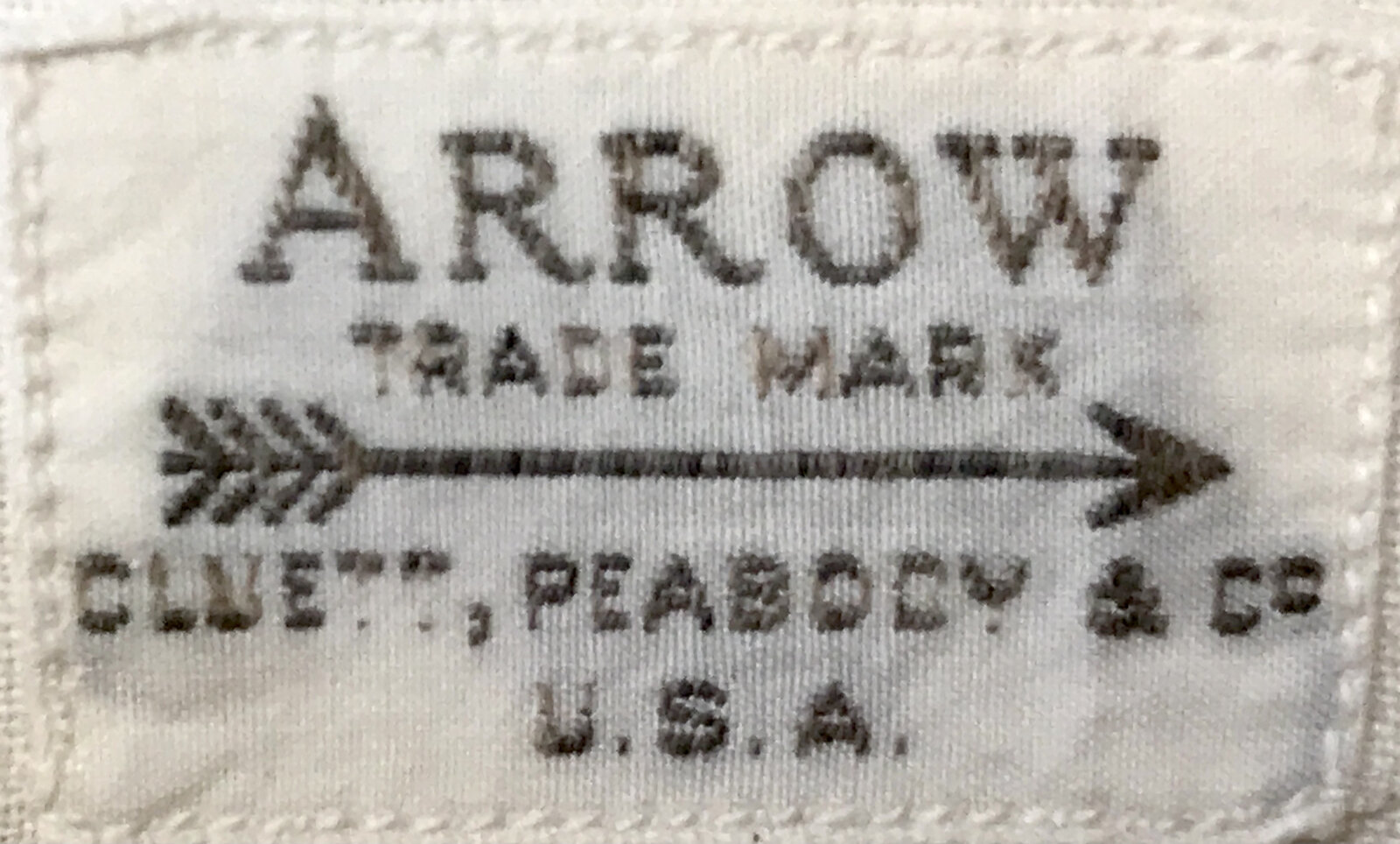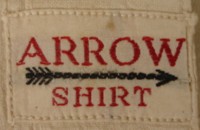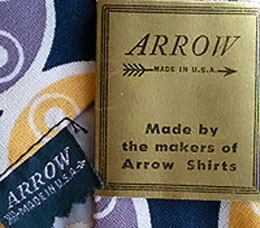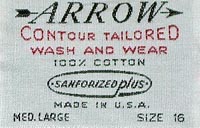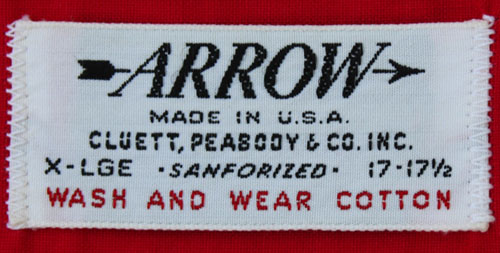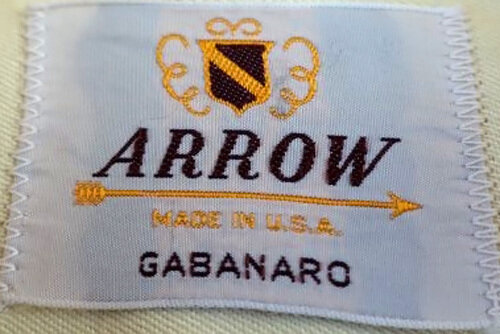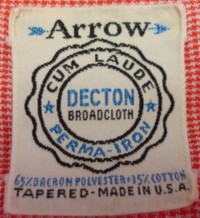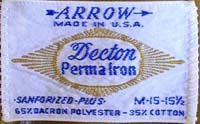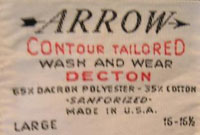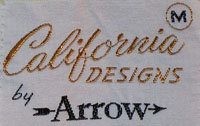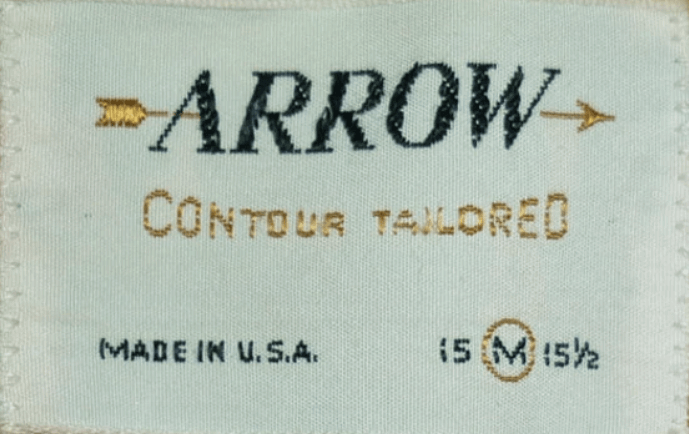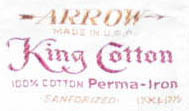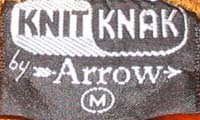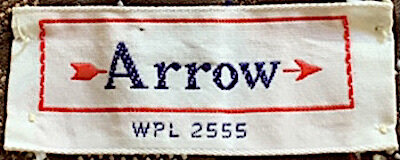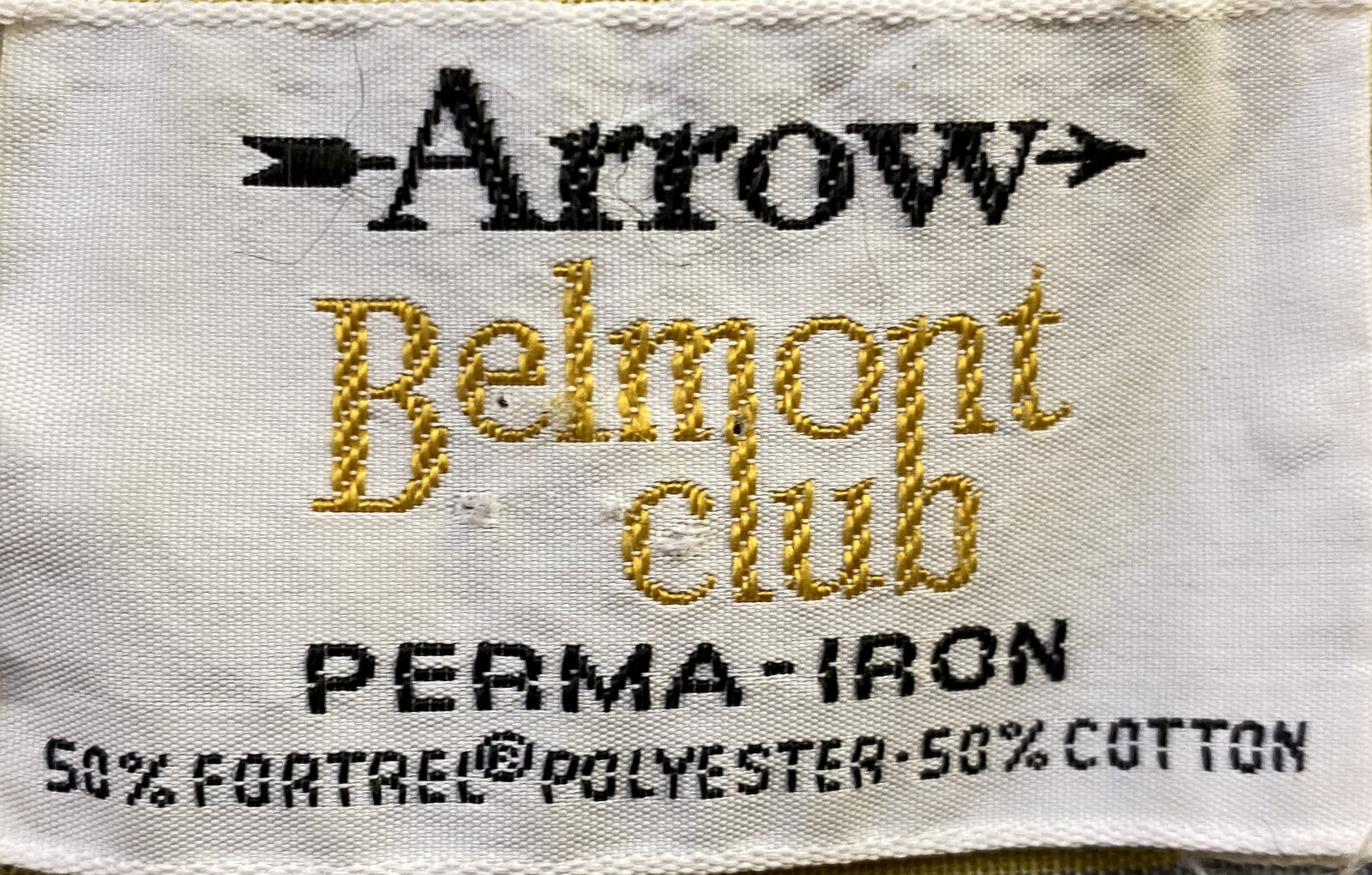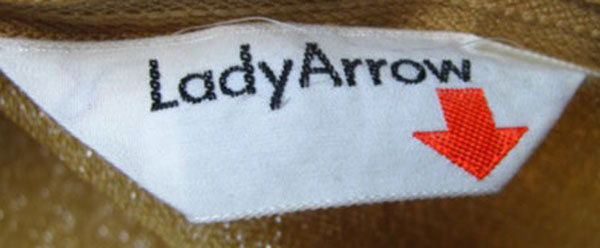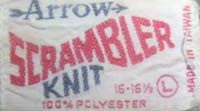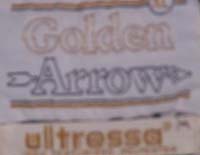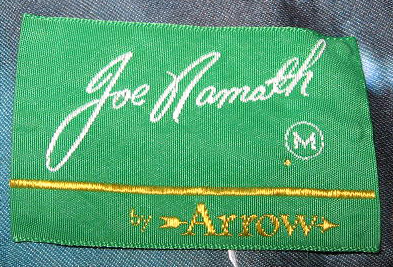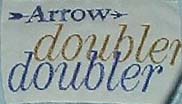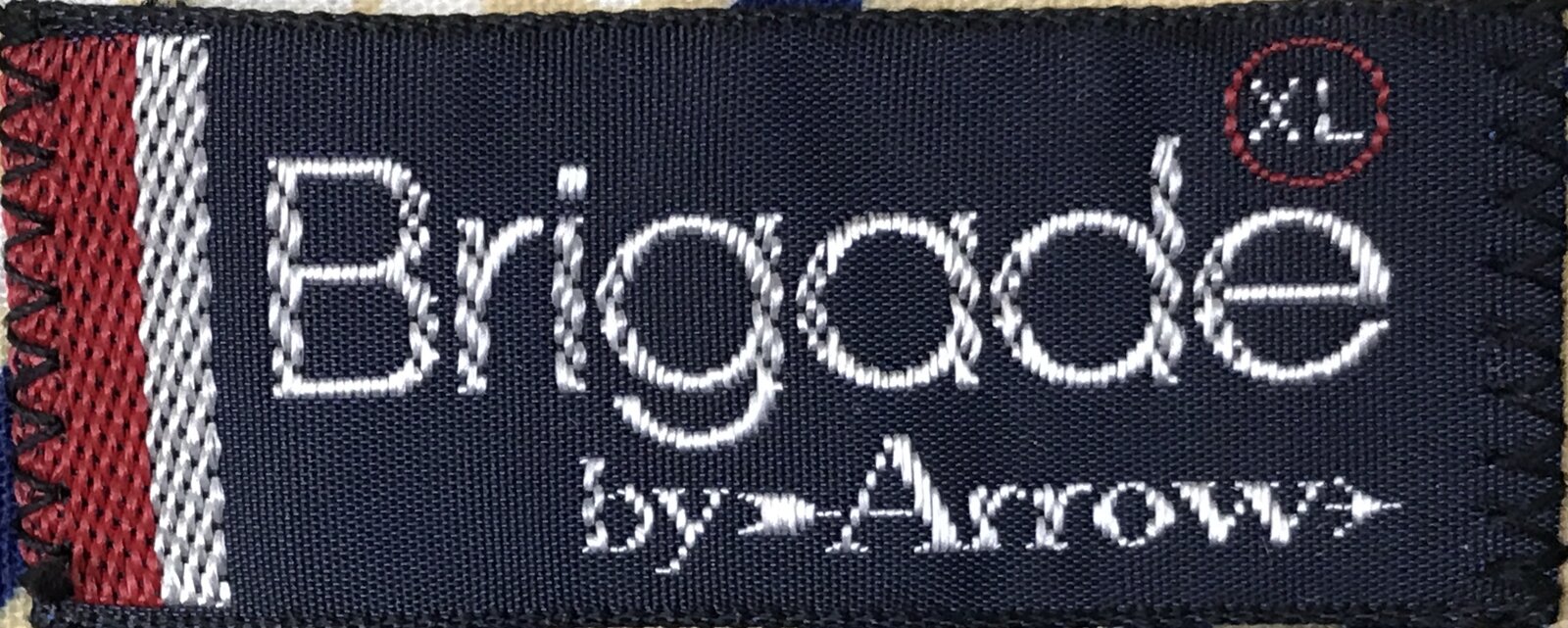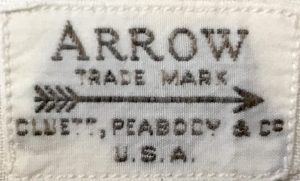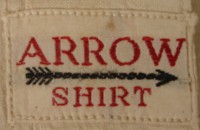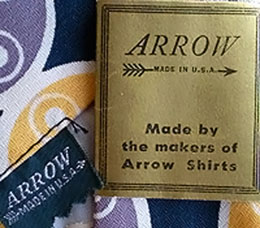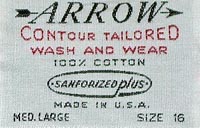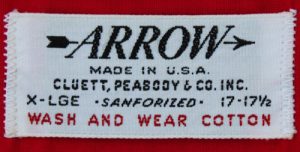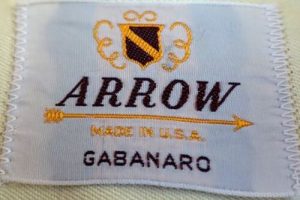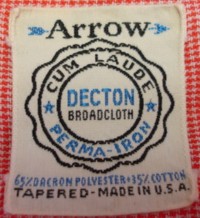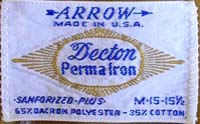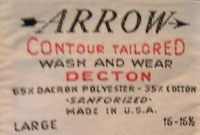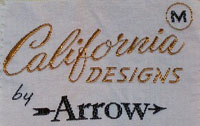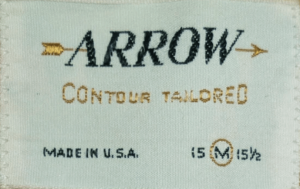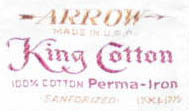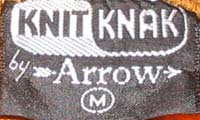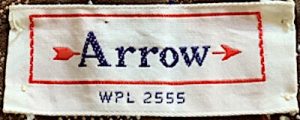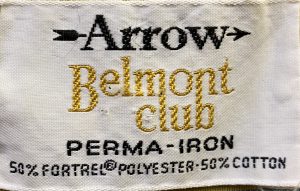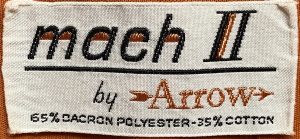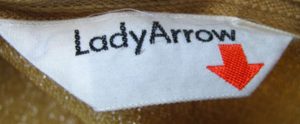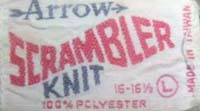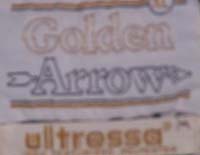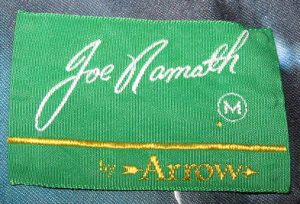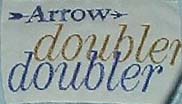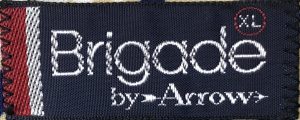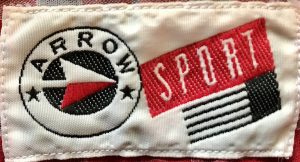Arrow began as a maker of detachable collars, and went on to become one of the largest makers of men’s shirts in the world.
In 1825, the detachable shirt collar was invented by a Troy, New York housewife, Hannah Lord Montague, who was looking for an easier way to keep her husband’s shirts looking fresh without having to launder them everyday. The idea caught on, and Troy was soon a center of collar manufacturing. Among the companies making collars was Maullin & Blanchard, a small business that started production in 1851. The company eventually became known as Cluett, Peabody and Co, and in 1885, the Arrow brand was born. Within a few years, they were the largest maker of collars in the world.
In 1905, the Arrow Company hired artist J.C. Leyendecker to develop a new image for their collars. He came up with the Arrow Collar Man, a handsome young man wearing the latest style of Arrow collar. This ad campaign that lasted over twenty years, and generated 1000s of fan letters from female fans.
By the middle of the 1920s, times were changing and men were dressing more casually. The days of the stiff detached collar were drawing to a close. The Arrow company decided to transition from primarily collars to shirts. They advertised that in order to get an Arrow collar, one must get an Arrow shirt. In 1930, in an effort to find a fabric that did not shrink when washed, Sanford Cluett, nephew of the founders of the company, developed a process the company named Sanforizing. They ended up licensing this process to hundreds of other companies.
In the 1930s, as Americans turned increasingly to sportswear, Arrow began making sports shirts with open collars and straight cut hems. This trend was interrupted by World War II, when the company made military uniforms, but when the War ended, they expanded their sportswear selections, including slacks and shorts, casual jackets and beachwear. They also continued to make shirts for the businessman, including the new button-down collar.
Through the 1960s, 1970s and 1980s, as times and fashions changed, so did the shirt offerings from Arrow. They are still in business today, and are still making men’s shirts. But they also make almost any garment a man would need, and they now have a women’s line.
Written by fuzzylizzie


